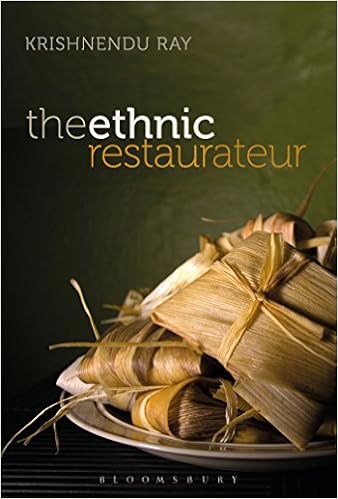This session is on Practicing Food Studies. It will be at 5;00 p.m. Details to come.
Weekend reading: Krishnendu Ray’s The Ethnic Restaurateur (Bloomsbury, 2016)

Full disclosure. I recruited Krishnendu Ray to NYU (for good reason as you can see from this interview in the Washington Post) and he is now my department chair.
With that said, I greatly admire what he’s done in this book, which is to cast a sociological eye on immigrants to the United States who get their start by using what they know of their own food tastes and traditions to open and run restaurants of the “ethnic” variety in today’s terminology.
Ray argues here (and elsewhere) that the contributions of immigrants to modern food culture are largely ignored by academics and critics who view
discussions of taste as marginal to the real lives of marginal peoples. In this conception, poor, hard-working people can teach us about poverty and suffering, hierarchy and symbolic violence, but never about taste…As a consequence, taste loses its contested and dynamic character, and…even its fundamentally sociological nature. As labor and immigrant historians have shown us repeatedly, good food matters to poor people, perhaps even more than it does to the rich and the powerful.
In his book, Ray draws on his readings, experience teaching at the Culinary Institute of America, and on interviews with cooks from China, India, Italy, and elsewhere to examine their motivations, experiences, and attitudes about the food they prepare and serve. He says
Nothing devalues a cuisine more than proximity to subordinate others. That explains not only the rise, fall, and rise again of Italian cuisine in America, but also the difficulty of Chinese, Mexican, and Soul food to break away, in dominant American eyes, from the contamination effect of low-class association. Poor, mobile people are rarely accorded cultural capital. The circulation of taste through the social architecture of class and race allows for the creation of a subcultural niche, say for the best taco, genuine dim-sum, or most authentic fried chicken, yet rarely assures a position among elite food cultures. [p. 97]
After reading this book, I find myself paying much more attention to the ethnic restaurants in my neighborhood, and thinking about who owns them, who works in them, and why and how they arrived at their menus. This book will change the way you think about them too.
Here is Krishnendu Ray on WNYC to explain why some cuisines—French in particular—are more expensive than most “ethnic” cuisines.

